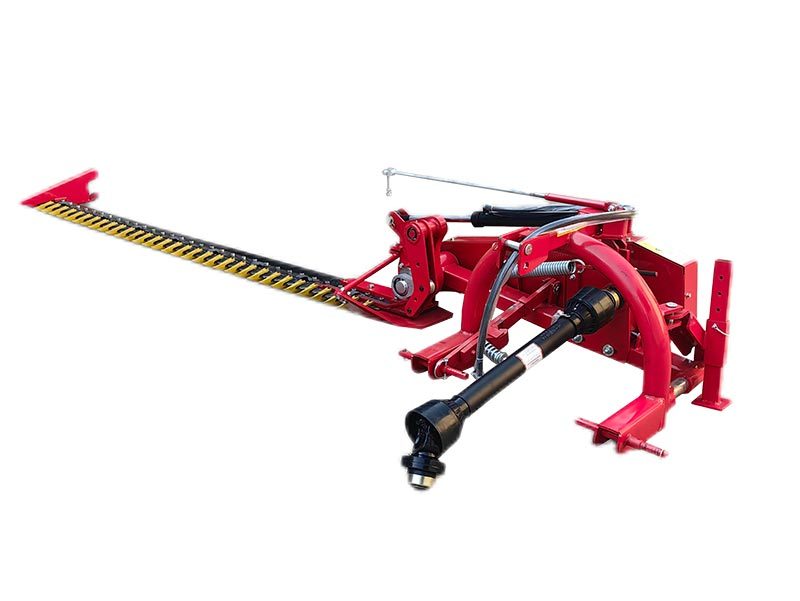News Center
31
2017
-
08
Cultivating Agricultural Service Organization and Promoting the Development of Agricultural Modernization in China
Recently, the Ministry of Agriculture, the National Development and Reform Commission, the Ministry of Finance issued the "on accelerating the development of agricultural production services industry
Recently, the Ministry of Agriculture, the National Development and Reform Commission, the Ministry of Finance issued the "on accelerating the development of agricultural production services industry guidance", proposed to develop diversified multi-level multi-type agricultural productive services. And strive to through the development of 5 years, the basic form of a reasonable service structure, a higher professional level, strong service capacity, service behavior norms, covering the whole industry chain of agricultural production services. This is the first document to support the development of agricultural productive services in China.
Agricultural productive service refers to the social services that directly complete or assist in the completion of agricultural prenatal, middle and postpartum operations. With the deepening of modern agriculture, agricultural production services to accelerate the development of various types of service organizations flourished, the service areas covering farming, aquaculture, fisheries and other industries, the emergence of full custody, on behalf of farming, Kind of service, to cultivate agricultural and rural economic new play an important role.
At present, the national agricultural public service agencies to reach 152,000, more than 1 million business services organizations, covering many aspects of agricultural production. However, compared with the actual needs of agricultural and rural development, agricultural productive service industry is still facing the scale of service, specialization and organization is not high, the service can not fully meet the needs of farmers, the strong driving force of ordinary farmers Problem, to a certain extent affected the process of China's agricultural modernization.
"China's agricultural production services is not wide enough." Ministry of Agriculture by the Secretary for Administration Zhang Hongyu that from the industrial chain, the service is relatively adequate, prenatal and postpartum links are lagging behind, especially prenatal market early warning, postpartum processing And sales service is not suited to agricultural products from time to time into the "more and more, less less" cyclical fluctuations. From the production area, the eastern region and the northeastern region of the relatively productive services, the central and western hills and mountains are relatively backward. As soon as possible to the agricultural market information, green production technology, early processing of agricultural products and other services to carry out, covering agriculture prenatal, middle and postpartum the whole process, and strive to solve the majority of households can not do a household, do not do well Of things.
To the early processing of agricultural products, for example, due to the origin of storage, preservation, drying and other processing services simple service, resulting in annual loss of agricultural products more than 300 billion yuan. Among them, the farmers grain loss caused by about 20 million tons of grain, postpartum loss of potatoes about 16 million tons, about 14 million tons of fruit, vegetables, about 100 million tons. To the most prominent vegetables, for example, China's postpartum loss of vegetables in Europe and the United States developed countries to 4 times to 5 times.
In view of the low level of initial processing of agricultural products, poor facilities, backward technology and other issues, from the beginning of 2012 the country implemented the origin of the initial processing subsidy policy, 5 years the central government accumulated investment of 3.6 billion, a total of 632 counties, nearly 50,000 farmers The Zong Jinyao, director of the Bureau of Agricultural Products Processing of the Ministry of Agriculture, said that in the future, efforts should be made to support the development of storage, drying, sorting and packaging of agricultural products processing and circulation enterprises to improve the commercialization capacity. Strengthen the construction of agricultural products preservation and cold chain system to support the storage at room temperature, air storage and other storage and preservation facilities concentrated contiguous construction.
This time, the agricultural production service industry short board in the three ministries recently issued a document has been the focus of attention. The document focuses on meeting the production and operation needs of ordinary farmers and new business entities, and puts forward the key support for agricultural market information service, agricultural supply service, agricultural green production technology service, agricultural waste resource utilization service, agricultural machinery operation and maintenance service, early processing of agricultural products Services, agricultural marketing services 7 major service areas. And strive to 5 years through the development of agricultural production services accounted for the proportion of total output value of agriculture significantly increased, and further enhance the productive services industry on the modern agriculture industry chain support role.
The expansion of service areas can not be separated from vigorously cultivating service organizations. Chinese Academy of Social Sciences researcher Du Zhixiong think, it is imperative to speed up the construction of public welfare services and business services, special services and integrated services in line with the new agricultural social service system. Through the improvement of service content, improve service capacity, so that the public service agencies to truly full coverage, security; but also to cultivate agricultural business services organizations, give full play to the advantages and functions of different service entities to meet the different business entities on socialization Service needs.







